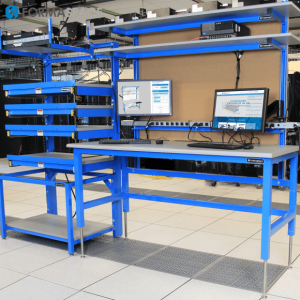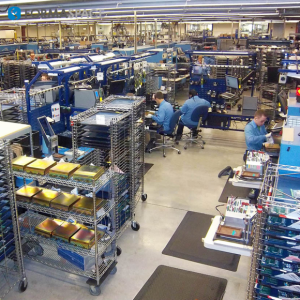How Remote Work Creates New Challenges for Businesses
Real-time inventory tracking offers significant advantages – even for smaller companies that might not have been able to implement such a system in the past.
Much like Goldilocks sampling the bowls of porridge at the table of the Three Bears, supply-chain managers evaluating these systems often found it difficult to identify a solution that was “just right.”
Many systems were too expensive and too complex to implement, while simpler versions often lacked sufficient flexibility to be useful in real-world conditions. And many of the earlier systems were overly dependent on workers inputting data manually, making data collection subject to human error.
Hosted Cloud Computing Platforms Are Enabling A Golden Age In Real-Time Inventory Management
So what has changed?
Well, it took a while, but it appears that cloud-based software platforms (which allow software vendors to provide applications under the moniker of software as a service) have matured to the point where real-time inventory tracking systems, hosted in the cloud, are gaining acceptance among supply-chain IT professionals who have heretofore been pretty skeptical about giving third-party vendors deep access to critical company infrastructure.
Cloud-based real-time inventory systems offer many advantages.
Firstly, cloud-based tools solve a problem that bedeviled systems based on older technology, the issue of data replication. Older systems often suffered from delays in updating the central database, because updates from the field were usually processed in batches that snaked their way up to the central database. But relying on batch updates defeats the purpose of real-time visibility, as the data is already becoming stale by the time the batch upload is complete. In contrast, well designed cloud-based databases allow multiple data inputs to be gathered (and processed) concurrently, from any location with a secure Internet connection.
The second advantage of cloud-based real-time inventory management systems is the potential savings in implementation and operating costs. Because these are complex systems to operate, update, and maintain, many businesses (particularly cost-conscious SMEs) often find it’s more economical to pay a monthly subscription fee rather than deploy a dedicated team to implement a home-brewed internal system. Many vendors also offer multiple service tiers to allow companies the option of just paying for services as needed (pay as you go) rather than having to make a big upfront investment.
There is a third potential advantage of using cloud-based inventory management services — thanks to the so-called network effect, in which a computer service becomes more valuable as more companies adopt the same system.
For example, if your company implements the same inventory control systems as one of your suppliers or customers, it opens up the possibility of sharing confidential inventory data without the need for complex data translation processes (by using the same vendor, there is a greater chance your data structures will be in alignment).
Of course, there are some downside risks as well. Security remains a primary concern for everyone involved. Intimate knowledge of a company’s supply chain operations, including current order book and pricing, are valuable trade secrets that need to remain confidential.
On the other hand, it may be reassuring to realize that most vendors offering cloud-based real-time inventory control systems understand their very existence depends on maintaining high levels of trust.
What To Expect When Migrating To A Real-Time Inventory Control System
So what can your organization expect when implementing a real-time inventory management system?
To give a comprehensive answer would take the length of an entire book, so we will try to boil this down into three components.
First, we will touch on ways that real-time inventory tracking systems can enhance long-standing best practices in supply chain management.
Read more...
Julia Solodovnikova
Formaspace
+1 800-251-1505
email us here
Visit us on social media:
Facebook
Twitter
LinkedIn
Legal Disclaimer:
EIN Presswire provides this news content "as is" without warranty of any kind. We do not accept any responsibility or liability for the accuracy, content, images, videos, licenses, completeness, legality, or reliability of the information contained in this article. If you have any complaints or copyright issues related to this article, kindly contact the author above.


